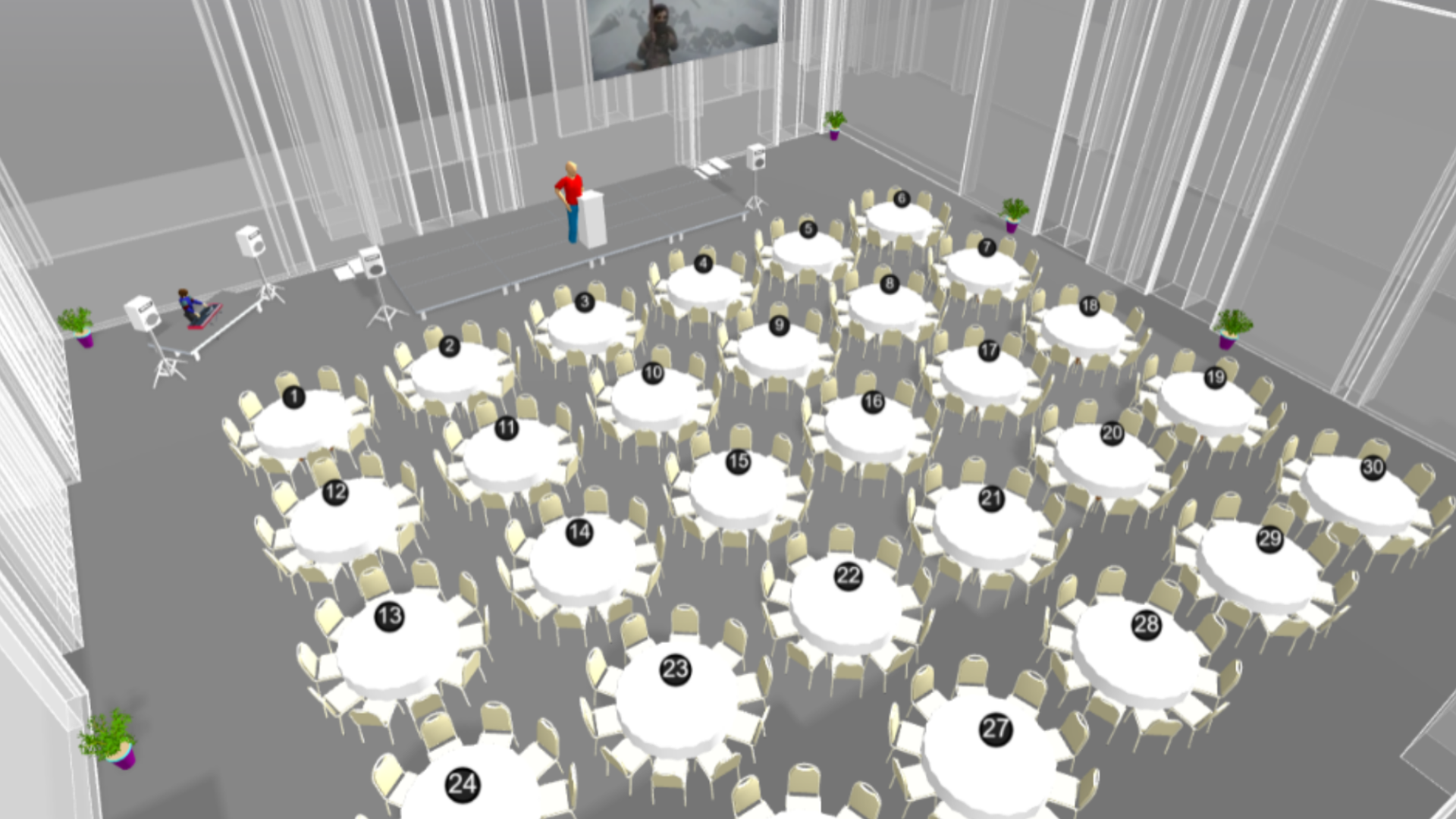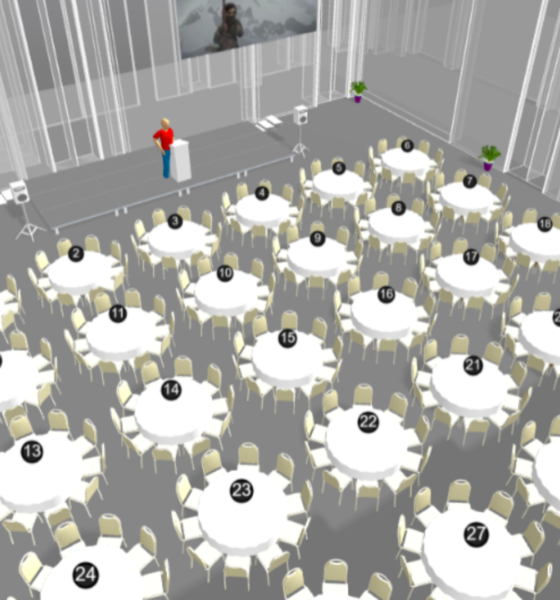

TECH
How Dynamic 3D Event Diagramming is Shaping the Future of Event Planning
Dynamic 3D event diagramming is revolutionizing how events are planned and executed. This technology allows event planners to create immersive and detailed layouts, providing a vivid and accurate representation of the event space. Using event diagramming software, planners can visualize every aspect of their events, from seating arrangements to decor, making the planning process efficient and highly effective.
Key Takeaways
- Dynamic 3D event diagramming enhances visualization and collaboration in event planning.
- It helps in spotting potential issues early, saving both time and money.
- Technological advancements are driving the adoption of this tool in the event industry.
Introduction to Dynamic 3D Event Diagramming
Creating interactive and adaptable diagrams equips planners with the tools to foresee potential issues and make real-time adjustments. This technology enhances the planning process and gives clients a clear picture of what to expect. This level of detail and precision can lead to smoother event execution and higher satisfaction among clients and attendees.
The Benefits of 3D Event Diagramming
There are numerous benefits to using 3D event diagramming. Firstly, it enhances visualization, enabling planners to see a realistic event representation. It aids in making well-informed choices and minimizing the chance of unexpected alterations. By visualizing the entire layout in 3D, planners can identify any spatial constraints or design flaws ahead of time, allowing for adjustments before the event day. Additionally, it allows for better collaboration among team members and stakeholders. By sharing 3D diagrams, everyone involved can provide input and see the same vision, leading to a more cohesive planning process. When all parties clearly understand the event layout, it minimizes miscommunication and ensures everyone is on the same page.
Around 80% of event planners believe that 3D diagramming tools enhance their ability to communicate effectively with clients and vendors. This improved communication can result in smoother coordination, timely service delivery, and a more harmonious overall event planning experience.
How It Helps Event Planners Save Time and Money
Dynamic 3D event diagramming not only helps visualize the event but also helps identify potential challenges early. Planners can avoid costly and time-consuming fixes by spotting issues before they become problems. This proactive method saves substantial time and cost by enabling proactive issue resolution instead of reactive problem-solving. Event planners using 3D diagramming tools reported a 30% reduction in onsite changes and adjustments. This reduction in last-minute changes saves money and reduces stress and logistical complications, allowing the planning team to focus on delivering a seamless event experience.
Moreover, sharing 3D diagrams with vendors and service providers allows for more accurate and timely setup. Vendors can better understand their requirements and space constraints, leading to more efficient workflows and saving time and resources.
Technological Advancements Driving Adoption
Advancements in technology drive the growing adoption of 3D event diagramming tools. Designers can create increasingly immersive and interactive designs. These innovations are bridging the gap between planning and execution, making it easier for planners to adopt and integrate 3D diagramming into their workflow. AR and VR technologies allow planners and clients to explore the event venue virtually, enhancing the planning process with a more interactive and thorough experience. These technological advancements enhance the capabilities of 3D event diagramming tools and encourage greater adoption across the industry. As more planners experience the benefits of these tools, their use is becoming more widespread, setting a new standard for event planning and design. Event planners can guarantee they offer their clients the most cutting-edge and efficient resources, thus reinforcing their outstanding reputation in event planning.
Real-World Applications and Success Stories
The real-world applications of 3D event diagramming are vast and varied. Organizers employ these instruments to design memorable events, including corporate functions, trade shows, weddings, and private gatherings. By providing detailed and interactive layouts, 3D event diagramming helps ensure that every aspect of the event is meticulously planned and executed. For example, a major corporate conference was thoroughly planned thanks to 3D event diagramming, ensuring that every detail was executed flawlessly. Visualizing the entire event space in 3D allowed the planning team to optimize the layout for traffic flow, seating arrangements, and technical setup, resulting in a highly successful event.
Another success story involves a wedding planner who used 3D diagramming to create a detailed and accurate representation of the wedding venue. It allowed the bride and groom to see precisely how their special day would unfold, giving them peace of mind and confidence in the planning process. These real-world examples highlight the versatility and effectiveness of 3D event diagramming tools in creating well-organized and memorable events.
Common Challenges and How to Overcome Them
While 3D event diagramming offers many benefits, it also comes with its own set of challenges. One issue that frequently arises is the learning curve associated with unfamiliar software. Many planners may need help learning and adapting to new tools, mainly if they use traditional planning methods. However, many providers offer comprehensive training and support to help users get up to speed. Another challenge is integrating these tools with existing systems. Event planners often use various software for different aspects of event planning, and ensuring these tools work seamlessly together can be a challenge. To tackle this, look for compatible software solutions and provide proper training for your team. Many 3D diagramming tools offer integration capabilities with other event planning software, making it easier to streamline the planning process.
Additionally, some planners may need more support to change from team members or stakeholders accustomed to traditional methods. To overcome this, highlight the benefits and advantages of 3D event diagramming and provide hands-on training and demonstrations to showcase its value.
Future Trends in Event Diagramming
The future of event diagramming is bright, with new trends constantly emerging. Anticipate increased integration of augmented reality (AR) and virtual reality (VR) for a more immersive planning experience. These technologies will enable planners and clients to walk through the event space virtually, making it easier to visualize the final setup and make necessary adjustments. Additionally, AI-powered tools will likely become more prevalent, offering smart suggestions and real-time problem-solving capabilities. AI can examine data and provide recommendations to enhance event organization, boost traffic flow efficiency, and elevate event design. Planners can make data-driven decisions and create more efficient and effective event plans by leveraging AI. Event planners will have even more tools to create stunning, well-organized events as these technologies evolve. Staying updated with these trends and incorporating them into the planning process will be vital to staying competitive and delivering exceptional events in the future.
Stay ahead of the curve with the freshest news updates by exploring TodayFirstMagazine!






